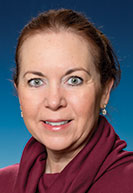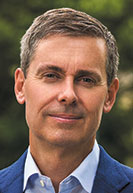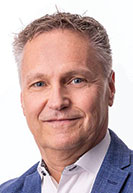Subscriber Benefit
As a subscriber you can listen to articles at work, in the car, or while you work out. Subscribe Now
The phone rings steadily at Phillips Drugs in Richmond these days, with callers asking if the pharmacy has any of Eli Lilly and Co.’s hot-selling diabetes and obesity drugs in stock. They already have called a dozen pharmacies, they say, and are getting frantic.
“I think they opened the Yellow Pages to all the pharmacies in the area and are going down the list,” owner Peter Zaleski said. He usually has to give them bad news.
At Topeka Pharmacy north of Fort Wayne, people are calling from as far away as Michigan, Ohio and southern Indiana with the same question.
“People are just desperate to find it,” owner Trevor Thain said.
Lilly’s newest obesity and diabetes medicines are drawing rave reviews from doctors, researchers and patients for their ability to safely and effectively control blood sugar and take off weight.

The drugs are popular for suppressing appetite and slowing stomach emptying. They have helped patients in clinical trials lose up to 26% of their body weight.
This class of drugs, known as GLP-1, is mostly made by Indianapolis-based Lilly and Denmark-based Novo Nordisk. The two companies, hit by a flood of prescriptions, are scrambling to make the drugs fast enough to meet demand.
All around the country, pharmacists are telling customers over and over that the Lilly and Novo drugs are on back order.
Doctors say the shortages threaten to interrupt the care of untold millions of patients.
“No one can get [Lilly’s] Mounjaro,” said Dr. Jane Bridges, a diabetologist at Good Samaritan Hospital in Vincennes. “They’re desperate. They want to stay on the product. It’s working. It’s making a difference in their lives.”

All of this comes as more than 40% of the U.S. adult population, or about 110 million people, suffers from obesity, defined as having a body mass index of 30 or higher. About 38 million Americans have diabetes, and 90%-95% of them have Type 2 diabetes.
Indiana can claim one of the highest rates in the nation, where 38% of the population is classified as obese, ranking the Hoosier state 10th-worst in the nation, according to America’s Health Rankings, published annually by United Health Foundation.
Many obese patients also suffer from diabetes, as well as other diseases, from chronic kidney disease to high blood pressure.
Dr. Theresa Greco, an internal medicine physician with Eskenazi Health, said many of her patients have found success with the GLP-1 drugs in controlling their blood sugar and weight. But that can be interrupted due to shortages of one drug or another or of the various doses.

“There are times that their blood sugar may not be well-controlled for a period if they’re completely unable to get a GLP-1 [drug] or if we’re trying to switch from one to another,” she said.
Dr. Whitney Blakley, who specializes in bariatric medicine at Community Health Network, said many of her patients are being forced to switch to other medicines or to interrupt their regimen, which calls for increasing the dosage of the once-weekly injection every month.
“We are in a situation where a lot of patients are not able to properly dose-escalate their medication,” Blakley said. “And ultimately, a lot of people have been having kind of interrupted therapy, which is not good.”
Lilly’s top-seller in this class is known by its generic name tirzepatide, which is sold under the brands Mounjaro (for diabetes) and Zepbound (for weight loss). The two brands have the same active ingredient and identical formulations.
Lilly said this week that “exceptionally strong demand” for Mounjaro and Zepbound helped boost first-quarter company profit to $2.24 billion on revenue of $8.77 billion. Mounjaro moved to first place among all its medicines by sales.
But the company warned that supply would remain “quite tight in the near term as well as the midterm.” Lilly officials did not specify when the shortages would improve.
Most doses of Mounjaro and Zepbound will be in short supply through the second quarter of this year due to high demand, according to an update on the U.S. Food and Drug Administration’s drug shortage database.
Scrambling to ramp up

In recent months, Lilly has scrambled to build or buy more manufacturing capacity around the world. Last year, it broke ground on a $3.7 billion project in Boone County, its largest capital expenditure ever on a single site. The company is also building manufacturing sites in North Carolina, Germany and Ireland and last week announced it is buying a manufacturing site in Wisconsin.
“Lilly’s top priority is to ensure we execute on our ambitious manufacturing expansion agenda,” CEO David Ricks told investors during a conference call on Tuesday.
But Lilly executives are warning that building a factory can take years, and there is no quick fix to the shortage.
“All this takes time,” Patrik Jonsson, Lilly president of diabetes and obesity, said during an IBJ Life Sciences Power Breakfast panel discussion last week. “You don’t set up those facilities in a matter of months. I think we’re running at record time right now. And it takes 3-1/2 to four years to get through this factory setup.”

Novo’s hot-selling drug in this class is known as semaglutide, which is sold under the brands Ozempic (for Type 2 diabetes) and Wegovy (for weight loss).
The FDA said this week that several doses of Wegovy are in short supply, but three smaller doses of the drug are still in limited availability. (Unlike Wegovy, which launched in 2022, Lilly’s Zepbound also acts on a second hormone receptor known as GIP, which helps amplify the weight loss.)
Novo Nordisk CEO Lars Fruergaard Jørgensen said in March that the gap between demand and supply for weight-loss drugs could take years to close. In the meantime, the drugmaker is acquiring three manufacturing sites that specialize in sterile drugs—in Italy, Belgium, and Bloomington, Indiana, at a large site formerly owned by Catalent.
Some pharmacists who study drug shortages say the tight supply of GLP-1 drugs is significant but probably not as serious as the shortage of several other types of drugs, including chemotherapy drugs for cancer.
“Over the past year, we’ve had serious shortages of chemotherapy that actually affected patients’ treatments,” said Erin Fox, an expert at the University of Utah who tracks drug shortages. “And some patients weren’t even able to get their chemotherapy treatments. So while this shortage of [GLP-1 drugs] is concerning, we definitely have had much more severe shortages of life-saving products, unfortunately.”
Nationally, more than 320 drugs are on the drug shortage list maintained by the University of Utah Drug Information Service.

Physicians who treat patients with diabetes and obesity say the conditions, left untreated or not sufficiently medicated, can lead to severe health complications and possibly early death.
“When it comes to blood-sugar management, when it comes to weight reduction, these medications are extremely effective,” said Dr. Ethan Blocher-Smith, a primary care physician with Indiana University Health in Fishers. “Frankly, in my opinion, they are worth the price of admission.”
The drugs have a list price of more than $1,000 a month, and many insurers have yet to include them on their formularies, often forcing the patients to pay the whole cost.
Patchwork of solutions
In recent weeks, Blocher-Smith said, he had to modify doses to match whatever was available or switch patients between certain medicines based on insurance coverage and the limited supplies he could find. “People essentially have to congregate to whatever is available,” he said.
Bridges, the diabetologist in Vincennes, said changing patients to other medicines, sometimes in a different class of drugs, is not only difficult for them. It’s also tough on her staff, which has to fill out reams of paperwork for insurance companies every time she wants to put patients on a new medication.
“It’s just a tremendous nightmare for my staff to do this paperwork,” she said.
If the shortages bother patients and physicians, they don’t seem to faze Lilly investors. Shares of the drugmaker’s stock soared 6%, or $43.90, to $781 on Tuesday, when Lilly announced earnings and laid out the sobering manufacturing situation.
Despite the drug shortages, Lilly also raised full-year revenue and profit guidance by about $2 billion, striking a bullish look on the rest of the year.
Chris Schott, an analyst at JP Morgan, told clients he believes sales of Lilly’s GIP and GLP-1 drugs could hit $60 billion by 2030. (Last year, Mounjaro sales were $5.16 billion, while sales for Zepbound, which launched in late November, were about $176 million.)
“Lilly remains one of our favorite names in the [pharmaceutical] group,” Schott wrote on Tuesday. “We see further upside to [Wall] Street estimates as Mounjaro continues to ramp and Zepbound fully launches.”
He continued: “And while shares trade at a significant premium to peers, we see unprecedented growth for Lilly over the next decade with the company’s incretin [insulin-stimulating hormones] franchise reaching $60 billion by 2030 and continuing to grow from there.”•
Please enable JavaScript to view this content.


How about diet and exercise?
Keith M.
+1
For diabetes??? Obviously, you’re not diabetic.
Diet and exercise is a part of taking these meds. Many expel go to a Compounding pharmacy and pay out of pocket for the GLP-1, Pure,Pharmacy in Carmel charges 200.00 a month for the highest dose.